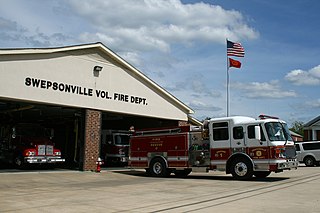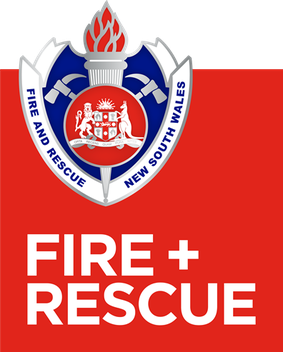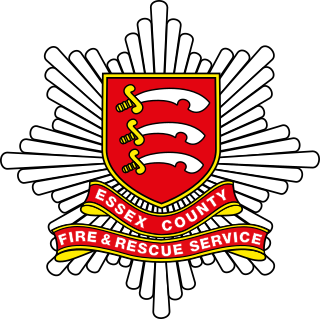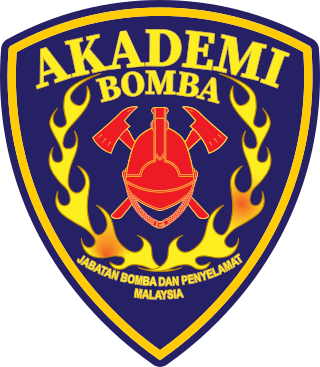
A fire department or fire brigade, also known as a fire company, fire authority, fire district, fire and rescue, or fire service in some areas, is an organization that provides fire prevention and fire suppression services as well as other rescue services.

A volunteer fire department (VFD) is a fire department of volunteers who perform fire suppression and other related emergency services for a local jurisdiction. Volunteer and retained (on-call) firefighters are expected to be on call to respond to emergency calls for long periods of time, and are summoned to the fire station when their services are needed. They are also expected to attend other non-emergency duties as well.

The Los Angeles County Fire Department (LACoFD) provides firefighting and emergency medical services for the unincorporated parts of Los Angeles County, California, as well as 59 cities through contracting, including the city of La Habra, which is located in Orange County and is the first city outside of Los Angeles County to contract with LACoFD.

The Fire and Rescue Department of Malaysia, commonly known as Bomba, is a federal agency of Malaysia responsible for firefighting and technical rescue. Bomba is a Malay word derived from the Portuguese bombeiros which means 'firefighters'.

Fire and Rescue NSW (FRNSW) previously known as NSW Fire Brigades (NSWFB), is an agency of the Government of New South Wales, Australia. FRNSW is responsible for firefighting, rescue and HazMat services in the major cities, metropolitan areas and towns across New South Wales. Fire and Rescue NSW is the fourth largest urban fire service in the world, with over 6,800 firefighters serving at 335 fire stations throughout the state, supported by 465 administrative and trades staff and 5,700 community fire unit volunteers. FRNSW are the busiest fire service in Australia, attending over 124,000 incidents a year.
As firefighting has a rich history throughout the world, traditions in this profession vary widely from country to country.

The fire services in the United Kingdom operate under separate legislative and administrative arrangements in England and Wales, Northern Ireland, and Scotland.
The following outline is provided as an overview of and topical guide to firefighting:

The Israel Fire and Rescue Services is the national Israeli fire and rescue organization. The organisation also provides rescue services from terror attacks, car accident and dangerous substance spillages, along with Magen David Adom, the National EMS. They are also involved in public education and awareness campaigns. The service is accessed by calling 102 from any phone. As of 2022, the commissioner of the services is Eyal Casspi.

Essex County Fire and Rescue Service (ECFRS) is the statutory fire and rescue service for the county of Essex in the east of England, and is one of the largest fire services in the country, covering an area of 1,338 square miles (3,470 km2) and a population of over 1.7 million people.

The Bangladesh Fire Service & Civil Defence (FSCD) is an emergency service that operates under the Security Services Division of the Ministry of Home Affairs in the People's Republic of Bangladesh. The department's primary objective is to provide critical public safety services, including fire protection, emergency medical care, and other essential services.

Firefighting has historically been a predominantly male profession throughout the world. However, since the 1970s, women have made inroads in both professional and volunteer fire departments in multiple countries. In modern times, women have served in a variety of fire service roles including as fire chiefs. Nonetheless, they comprise less than 20% of firefighters even in the countries where they are best represented.
Firefighting is the act of extinguishing destructive fires. A firefighter fights these fires with the intent to prevent destruction of life, property and the environment. Firefighting is a highly technical profession, which requires years of training and education in order to become proficient. A fire can rapidly spread and endanger many lives; however, with modern firefighting techniques, catastrophe can usually be avoided. To help prevent fires from starting, a firefighter's duties include public education and conducting fire inspections. Because firefighters are often the first responders to victims in critical conditions, firefighters often also provide basic life support as emergency medical technicians or advanced life support as licensed paramedics. Firefighters make up one of the major emergency services, along with the emergency medical service, the police, and many others.

Fire museums, also known as firefighting museums are prevalent throughout the world.

Firefighting in the United States dates back to the earliest European colonies in the Americas. Early firefighters were simply community members who would respond to neighborhood fires with buckets. The first dedicated volunteer fire brigade was established in 1736 in Philadelphia. These volunteer companies were often paid by insurance companies in return for protecting their clients.
The Hellenic Fire Service is the national fire and rescue service of Greece. It is part of the Ministry for Citizen Protection.

Harrisburg Bureau of Fire (HBF) is a firefighting agency that is located in and serves Harrisburg, Pennsylvania, and its surrounding metropolitan area. It is a career firefighting agency with at least 15 firefighters and fire officers on duty at any given time, supplemented with volunteer staffing as well. Everyday duties for the Bureau include fire suppression, emergency medical services, tactical rescue, urban search and rescue, water rescue, hazardous materials response, fire prevention, fire codes enforcement, and public safety educations.
'The National Fire Service Academy (NFSA) is a fire service education facility operated by National Fire Agency. It was founded on May 16, 1995 and is located at 90, Yeondanjiji-gil, Sagok-myeon, Gongju-si, Chungcheongnam-do.

The Fire and Rescue Academy of Malaysia is a tertiary education institution in Malaysia that specialises in fire and safety education and training. The Fire and Rescue Department of Malaysia manages the academy, and enrollment is open to the general public. The institution offers education up through the advanced diploma level. FRAM has five campuses located around Malaysia.

















